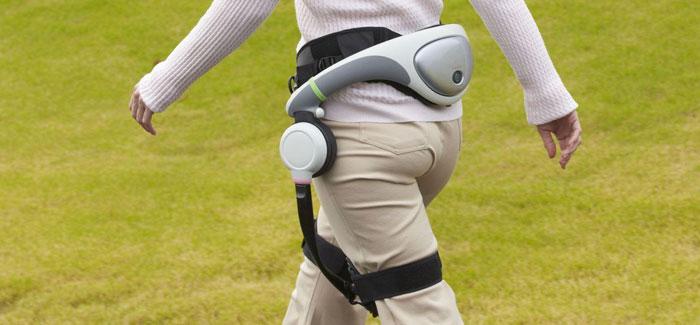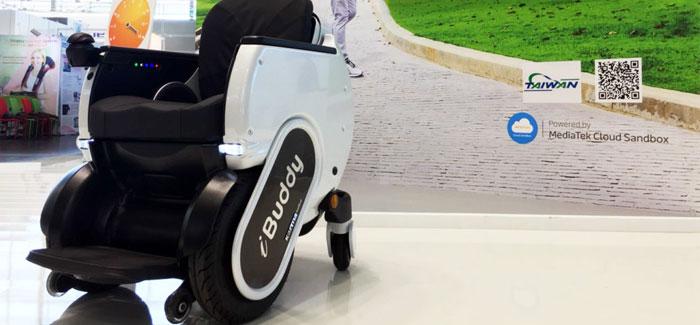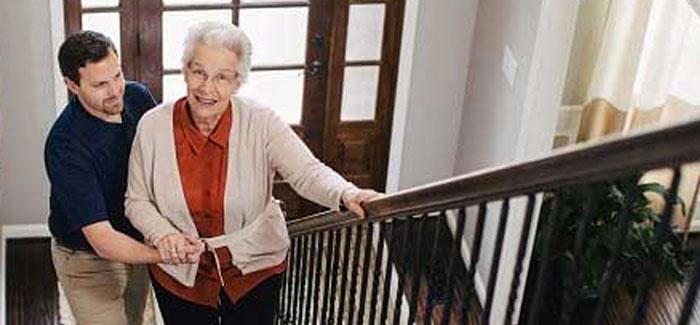
06/05/2019
MyEye2.0 from OrCam: a solution for the visually impaired
According to the Blind Foundation of Quebec, more than one hundred thousand people have a visual impairment at different levels. Two-thirds live in metropolitan areas, their living conditions and their possibilities are limited.
Today, in a society where appearances are needed and more than 80% of the information we receive is visual, 1 the use of our eyes is essential to move and understand our environment. Whether in the street, in buildings, restaurants, shops, and even in the comfort of his home, everything is conceived in relation to the link between the brain and the eyes. Unfortunately, this implies that people with some type of visual impairment can not adapt and flourish like most people do.
In order to integrate the visually impaired population into a society that evolves at the speed of light, the American company OrCam has been working since 2015 on processes, software and devices to facilitate their daily lives. One of their successes is MyEye.
MyEye
The MyEye2.0 is a small electronic device of about 23 grams that attaches to glasses with a magnetic support. It is very responsive, lightweight, discreet and arises on most frames. With a wave of his hand, he takes a picture of what the wearer designates with a thirteen-megapixel camera, scans the transcriptions and recites the texts automatically, a bit like a GPS. This device has a portable assistive technology2 adapted for the visually impaired, simple and intuitive. Everyone can use it (elders, adults and children), and several languages are available such as French, English, Spanish and German.
The MyEye2.0 has the ability to read, with striking fluency, any text, whether it is printed or displayed on a digital screen: an article on the Internet, a restaurant menu, guidelines, a label. In short, anything typed can be scanned and processed by the device. Recognition is not yet adapted to cursive writing. Then he can memorize up to a hundred faces! Simply record the name of the person and MyEye2.0 immediately identifies the parties to announce it and describe its bearer position. In the same vein, it can identify one hundred and fifty dangerous products and objects to avoid accidents or make mistakes when making large purchases. Another interesting advantage of MyEye2.0 is that it does not require an internet connection. He will always work at one hundred percent of his capacity for six hours.
Its conception
But how does this camera to receive and memorize so much information? What was the computer system chosen for the MyEye2.0?
As explained above, the person has to point what he wants to identify or read. With this simple gesture, the camera photographs the field of view so that the system can analyze it with precise metric coding. Then, through a mini speaker or headphones (depending on the wearer's preference), voice recognition delivers the information. Consisting of a discreet camera and a small electronic box, this device also contains a computer system and features specific to many gadgets: a plug for a headset, menus with navigation buttons, a reader SD card, connector, charger, etc. It does not need any wire or box to work, which reinforces its speed of use, the battery life, as well as the independence of the visually impaired. Regardless of location, weather and light, the system will not be diverted and no information will be lost during the day. So, the MyEye2.0 is very easy to use and offers concrete, accurate and almost unlimited results.
Artificial innovation
According to the article "Orcam MyEye gives the taste of reading to the blind" published in 2016 on the site objetconnecte.net, the MyEye "was tested on twelve blind, all unable to read a message on a smartphone, a newspaper article , a menu, a mail or a page of a book. With the glasses, eleven managed to recognize a banknote, eight found the right hotel room using the indications on the walls, seven recognized the cereal brand among several boxes of exactly the same size. After a week of testing, all managed to do at least nine of the ten tasks offered by the company. "
As a result, the regular use of MyEye2.0 improves daily life and quality of life for people with visual impairments, some difficulties with reading (dyslexia, learning disabilities, Alzheimer's), and even the blind. A pioneer in the exploitation of portable artificial vision, this electronic tool may replace, in the near future, software and school reading screen peripherals, magnifying mice and contrast keyboards.
QUOTED SOURCES
1 http://www.fondationdesaveugles.org/la-fondation/a-propos/
https://www.objetconnecte.net/lunettes-orcam-myeye-2016/
ADDITIONAL SOURCES
https://informations.handicap.fr/art-orcam-lunettes-aveugle-853-10112.php
http://www.yanous.com/pratique/materiels/materiels180316.html


